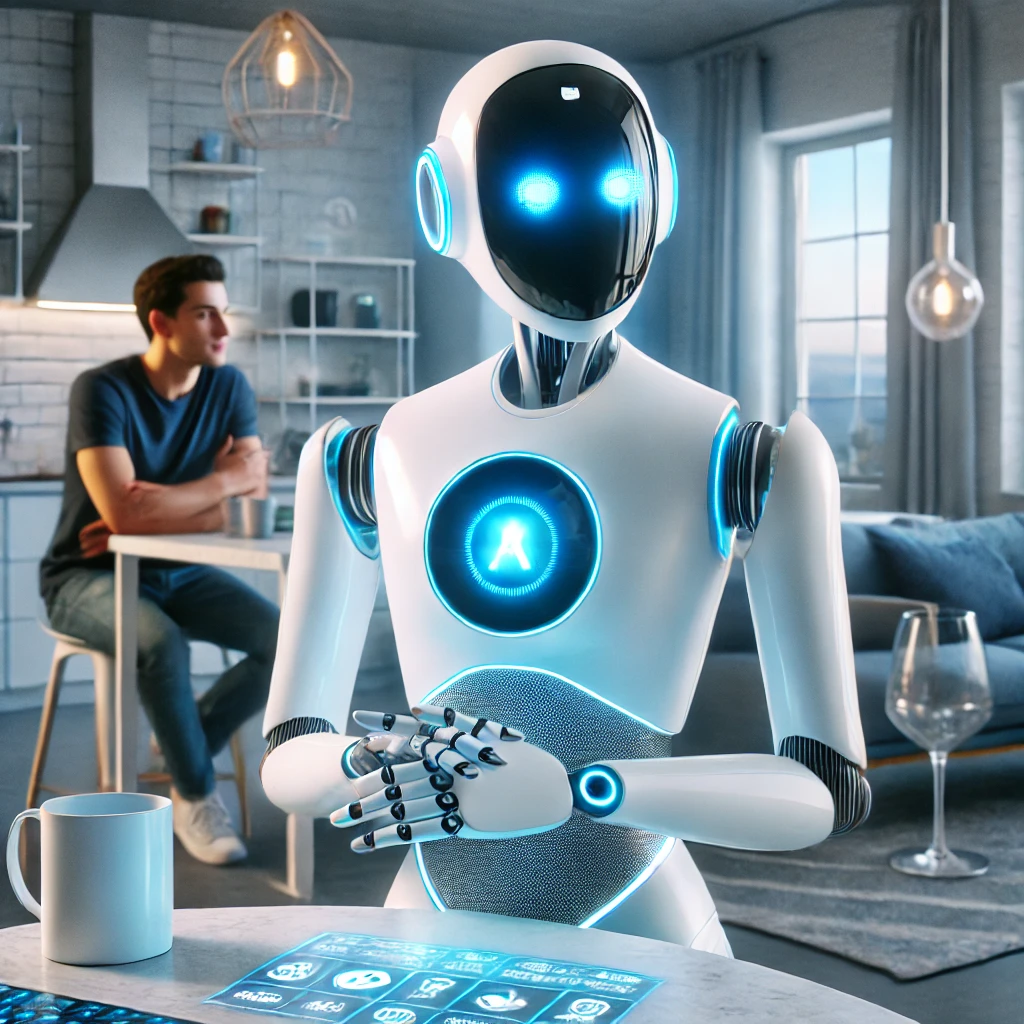Artificial Intelligence through its advancements revolutionizes the relationship of humans with technological devices. Authorities recognize AI Companion Robots as one of the most remarkable achievements in human technology. The robotic systems were built to help humans as well as maintain social bonds and establish emotional connections. Modern society integrates AI companion robots as essential elements because these machines provide both help and friendship to humans. The artificial intelligence companion robots succeed in diminishing human-machine boundaries through their human-style behavior patterns that develop emotional capacities along with interactive capabilities. AI technologies advance at a rapid pace which turns robots into more perceptive devices that increase their ability to interact with meaningful human-like personalization.
What is an AI Companion Robot?
The artificial intelligence-based smart machine functions as an AI Companion Robot which provides communication assistance to people through various processes. The robots demonstrate flexibility because they provide assistance both as personal helpers and emotional friends. Such robots possess natural language processing (NLP) and machine learning together with computer vision to interpret both human emotions and commands.
The most sophisticated AI companion robots teach themselves to replicate both human dialogue processes and facial expressions and physical movements which makes them highly appealing companions to users. These robots create strong interactions by maintaining meaningful discussions along with learning past experiences that enable them to respond in a personalized way.
Features of AI Companion Robots
- The employ of deep learning and NLP enables AI companion robots to perform better communication functions through advanced AI algorithms.
- The robots employ Voice along with Facial Recognition capabilities for recognizing people and tailoring their conversation style.
- In terms of emotional intelligence these robots can recognize human emotions to provide suitable responses.
- AI companion robots will establish connections to smart home systems because of their ability to integrate with them.
- The robots become smarter through continuous human interaction.
- Several AI companion robots contain artificial arms with locomotion abilities to perform various tasks.
- These devices provide entertainment through games and storytelling and they will help with leisure activities.
Applications of AI Companion Robots
Various domains utilize AI companion robots because of their extensive uses. Their capacity to interact supported by assistance capabilities produces value across different fields of application.
AI Companion Robots in Healthcare
The healthcare industry currently depends heavily on AI companion robots to provide support to its operations. These robots help medical patients through daily support services and medication alerts and additionally function as friendship companions to decrease isolation.
Benefits in Healthcare
- The support system of AI companion robots enables elderly people to perform everyday operations while granting them emotional companionship.
- Source robots possess the ability to monitor emotions and initiate encouraging dialogue with users.
- Certain AI robots include the capability of alerting users when it is time to take their prescribed medicines.
- The advanced robots system helps patients perform physical therapy exercises.
AI Companion Robots in Personal Assistance
Alongside their popularity as personal assistants AI companion robots enable people to schedule their days while providing smart home management services.
Personal Assistance Features
- AI companion robots enable users to achieve efficient task scheduling through their management features.
- The robots function through linking with intelligent household appliances to bring users more simplicity.
- Users can interact using voice commands because these devices provide voice assistance functions.
- Asset security gets support through AI robots that examine residence areas for protective purposes.
AI Companion Robots in Education
The educational sector receives substantial benefit from AI companion robots which prove their effectiveness. The robots function as educational tools which support students throughout their learning process.
Role in Education
- AI companion robots deliver educational experiences that maintain student interest while being entertaining.
- The robots offer customized educational assistance that matches learning preferences of their student users.
- The accessibility of AI robots extends continuously across all daily periods since students can contact them at any time for help.
- AI robots provide students with automated feedback when teaching them foreign languages through their educational systems.
AI Companion Robots in Social Interaction
AI companion robots serve multiple purposes because developers work on creating these robots to assist users as well as to provide social and emotional support.
Enhancing Human Relationships
- The emotional requirements of socially isolated individuals receive support through AI robot companionship programs.
- The robots help people who experience social and speech-related anxieties to enhance their communication abilities.
- Through Autism therapy AI robots enable children with autism to build their social abilities.
The Future of AI Companion Robots
Technological developments throughout the AI Companion Robot industry continue to intensify thus creating robots smarter and more capable.
Upcoming Innovations
- People will gain improved emotional intelligence because future AI companion robots will learn to recognize human emotional states.
- Natural communication becomes possible through advanced NLP improvements in conversations.
- AI robots will establish complete seamless connectivity between multiple IoT devices.
- The price of AI companion robots will decrease to make them accessible for average users.
- AI robots will possibly acquire capabilities to deliver similar to human physical care through simulated hugging and similar actions.
- AI robots will retain history of previous communication and life occurrences to build stronger ties between humans.
Challenges and Ethical Concerns
AI companion robots create many advantages for users but generate specific obstacles as well as moral problems.
Ethical Issues
- Robot companions which make use of AI technology raise privacy matters because they gather personal information from users.
- The overuse of robots creates a dependency that might affect human interpersonal bonds.
- AI systems display biased behaviors when programmers fail to eliminate errors from their algorithms.
- The establishment of emotional attachments with AI robots threatens real-life romantic relationships of users.
- Job Displacement will occur due to the job elimination which takes place through robots controlled by AI.
Conclusion
Human-machine interactivity undergoes revolutionary changes because of the AI Companion Robot. Smart robots currently make essential contributions to healthcare together with education and integrate into our everyday lives. Modern technological developments will bring AI companion robots closer to complete sophistication because they will provide better emotional connection and helpful services. AI companion robots maintain a promising future which enables them to transform human technologica communication methods. AI companion robots continue to innovate toward closing the artificial intelligence-human emotions divide so they reshape the path of human-machine attachments in the modern world. The progress of these robots will extend technology limits until they ultimately become essential companions for future years.





